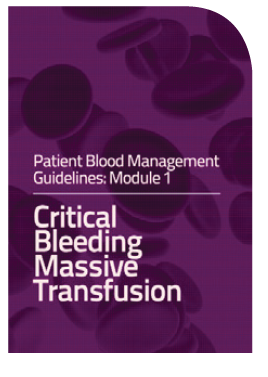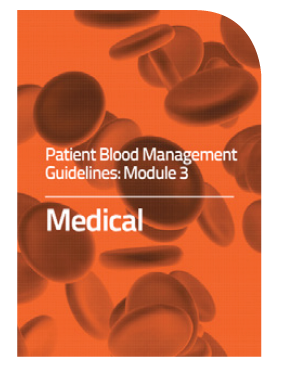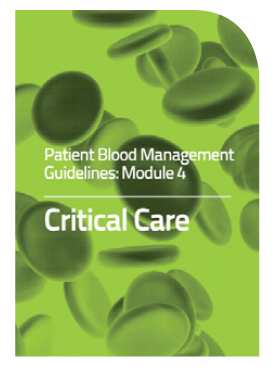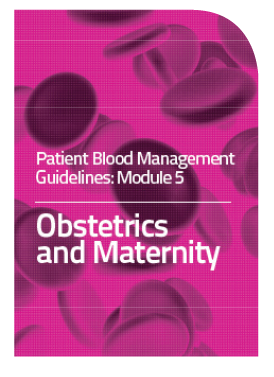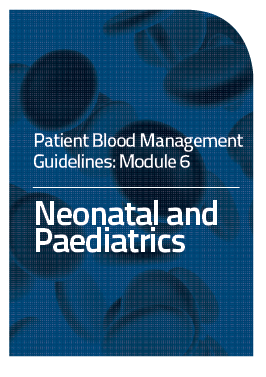You are here
Objective 3. Promote the safe and efficient use of blood and blood products
In 2017-18, the NBA continued its intensive program to promote the safe and efficient use of blood and blood products. This includes the delivery of a range of key reference material and accelerated supporting implementation activities in relation to reducing wastage and improving fresh blood use based on the NBA-developed Patient Management Guidelines (PBM Guidelines).
Reference Development
In 2017-18, the NBA commenced research and analysis of alternative guideline development methodologies with the aim of identifying and implementing a more sustainable methodology for reviewing and updating the PBM Guidelines. The NBA also finalised the research protocol for a new evidence-based guideline on the prophylactic use of Rh D immunoglobulin in maternity care.
Collaborative partnership to develop a new evidence-based guideline for the prophylactic use of RhD immunoglobulin (Anti-D) in maternity care
The NBA released the Guidelines on the prophylactic use of Rh D immunoglobulin (Anti-D) in obstetrics in 2003. In addition to providing clinical guidance on antenatal prophylaxis, these guidelines also addressed supply constraints at the time of publication by including a staged implementation process for a full antenatal prophylaxis program in Australia.
In October 2016, the NBA and the Royal Australian and New Zealand College of Obstetricians and Gynaecologists (RANZCOG) agreed that a new evidence-based guideline on the prophylactic use of Rh D immunoglobulin in maternity care should be developed through a collaborative partnership between the NBA, RANZCOG and other relevant stakeholders.
The development of the guidance is being overseen by a multi-disciplinary Expert Reference Group (ERG), which includes expertise in:
- obstetric and maternal fetal medicine
- neonatology
- general practice
- haematology
- private pathology
- midwifery
- consumer engagement.
The research protocol has been completed and the systematic review is now underway. Any impact on the existing antenatal prophylaxis program will be considered throughout the guideline development process.
The guideline is expected to be completed in the first half of 2019.
PBM Guidelines
Over 150,000 hard copies of the PBM modules 1 to 6 have been issued. They have also been downloaded in over 60 countries. They provide evidence based guidance on optimisation of the patient's own blood, non-transfusion strategies to minimise blood loss and bleeding and strategies to manage anaemia. The review and update of the PBM Guidelines is now underway. The review is considering a broader scope across the suite of modules rather than updating each module in isolation and is seeking to identify a more sustainable guideline model where clinical guidance can be updated and disseminated as the evidence base and clinical practice evolves. While the review is underway, the original modules remain available to guide practice.
PBM Guidelines publication covers
National Anti-D Guidelines
In 2017-18, the multi-disciplinary Expert Reference Group (ERG) overseeing the review of the 2003 Guidelines on the Prophylactic Use of Rh D Immunoglobulin (Anti-D) in Obstetrics in 2017-18, finalised the research protocol for a new evidence-based guideline on the prophylactic use of Rh D immunoglobulin in maternity care.
Implementation
A core element of ensuring reference material influences the safe and efficient use of blood and blood products are activities that support their implementation. In 2017-18, the NBA continued its focus on activities to support implementation of measures to reduce wastage of blood and improve appropriate use through PBM as defined in the JBC approved National Blood and Blood Product Wastage Reduction Strategy 2013-2017 and the National Patient Blood Management Implementation Strategy 2017-2021. The strategies address a significant proportion of requirements identified in the 2010 Australian Health Ministers' Statement on National Stewardship Expectations on the Supply of Blood and Blood Products.
The NBA developed the National Blood Product Management Improvement Strategy 2018-22 (Improvement Strategy) which supersedes the National Blood and Blood Product Wastage Reduction Strategy 2013-2017 (Wastage Strategy). Actions outstanding from the Wastage Strategy have been included in the Improvement Strategy to be progressed during the 2018-22 period.
The development of the Improvement Strategy was discussed and subsequently endorsed by JBC.
The review and update of the Patient Blood Management Guidelines
The Patient Blood Management (PBM) Guidelines provide evidence-based clinical guidance on optimisation of patients' own blood, non-transfusion strategies to minimise blood loss and bleeding and strategies to manage anaemia.
Upon completion of the suite of PBM Guidelines in 2016, the NBA turned its attention to maintaining their currency with the aim of transitioning to a more sustainable methodology.
The following activities are underway:
- systematic review for the update of
Module 1 (Critical Bleeding/Massive Transfusion) - review of the current evidence base against the updated research questions for
Module 2 (Perioperative),
Module 3 (Medical),
Module 4 (Critical Care),
Module 5 (Obstetrics and Maternity) and
Module 6 (Neonatal and Paediatrics). - research and analysis of alternative methodologies for updating clinical practice guidelines.
These activities will:
- underpin the development of updated clinical guidance for the critical bleeding/massive transfusion setting
- inform whether the existing themes of the PBM Guidelines should be retained or amended
- underpin a research question priority list
- identify a more sustainable guideline model.
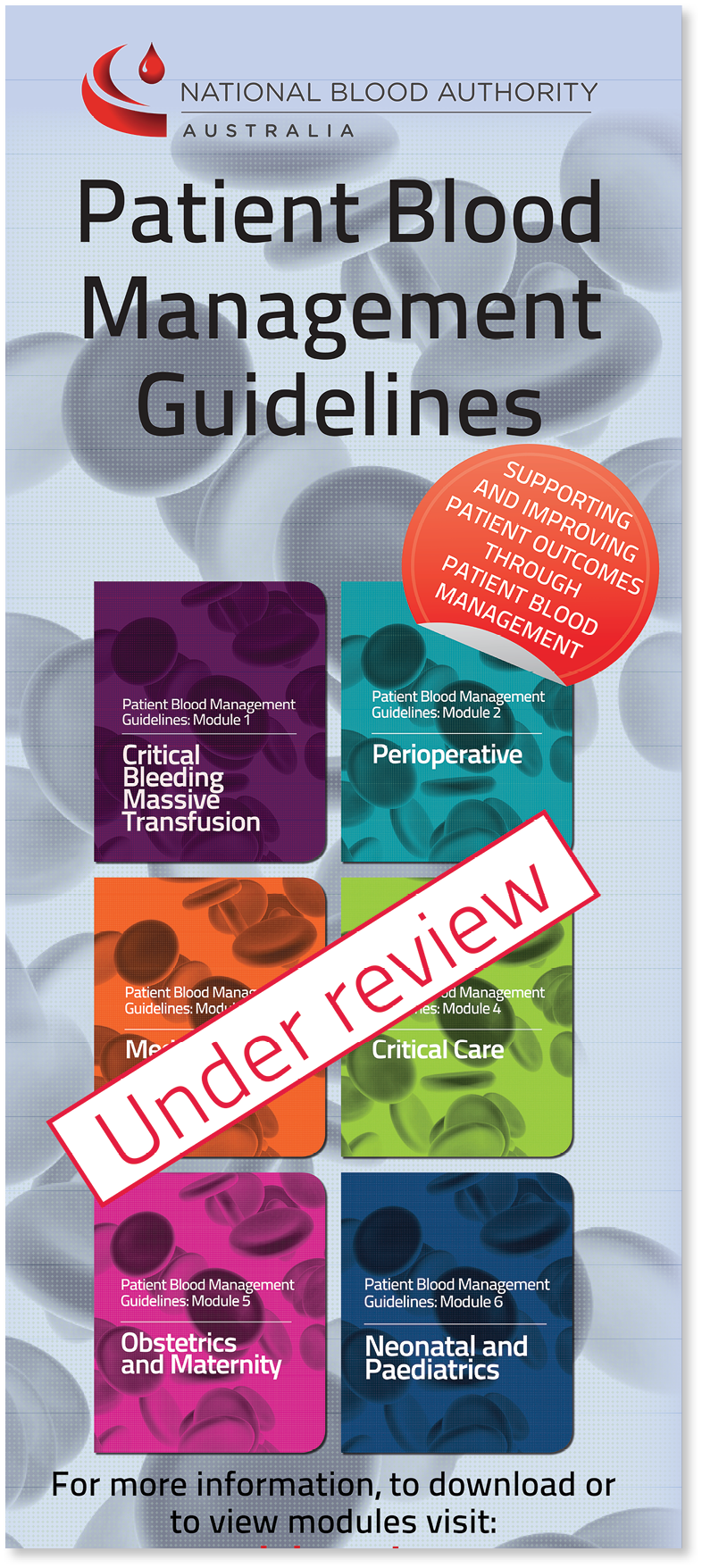
National Patient Blood Management Implementation Strategy
Background
The National Patient Blood Management Implementation Strategy 2017-21 (Strategy) sets out objectives and outlines activities to be undertaken over the five year period across six themes including guidelines, tools and resources, education and training, promotion and communication, data, and research and development. The overall goal of the Strategy is to improve patient safety and optimise clinical outcomes in relation to patient blood management.
PBM improves patient outcomes by ensuring that the focus of the patient's medical and surgical management is on optimising and conserving the patient's own blood. PBM is not an intervention or an alternative to allogeneic blood transfusion; it is sound evidence-based clinical practice.
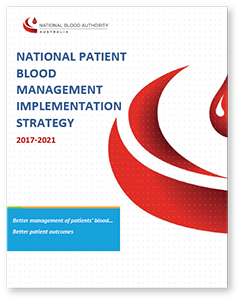
The operational and cultural change required to implement best practice clinical outcomes at a health provider level are significant and sometimes require complex changes in business process and clinical practice. There are also a range of wider environmental challenges (such as organisation funding pressures and clinical champions) confronting jurisdictions and health service organisations seeking to implement the change.
Education and Training BloodSafe eLearning Australia (BEA)
BloodSafe eLearning Australia courses on PBM are an integral part of the PBM Implementation strategy 2017-2021. During 2017, NBA commissioned a review of the BEA program to provide options for funding of the program into the future.
The NBA considered the options and agreed with the outcomes of the review, namely that there is a continuing need for a national blood education resource that supports the PBM Guidelines and promotes consistency in clinical practice and that a training needs analysis should be undertaken to assess the BEA program content. The analysis will help define the target market for each course, the size and desired level of coverage of that target market, as well as any gaps that may exist in existing programs.
In December 2017 the Jurisdictional Blood Committee (JBC) approved the outcomes of the review and provided recurrent funding for the BEA program though the NBA's National Supply Plan and Budget. Depending on the outcomes of the training needs analysis, a program for new products and services and of their prioritisation will be a matter for further JBC consideration.
PBM Tools and resources – Case Study
During 2017 the NBA worked with Flinders Medical Centre staff to develop a video case study on the use of small volume tubes (SVT) in the intensive care unit (ICU) to reduce hospital acquired anaemia.
Hospital acquired iatrogenic anaemia (IA) is a well-described entity in especially long stay patients in ICU. It is imperative to minimize iatrogenic blood loss contributing to anaemia and potentially leading to increased blood transfusion requirements and associated risks and cost. It has been shown that blood loss due to blood sampling contributes significantly to IA. A simple but highly effective way of reducing blood loss is to withdraw less blood with every episode of sampling. This study showed that it is possible to use SVTs without adversely affecting the function of the automated laboratory and still have reliable and accurate results.
National Quality and Safety Health Service Standards
The second edition of National Quality and Health Service (NSQHS) Standards was released in November 2017. Standard 7 – Blood Management is one of the eight National Standards. The second edition of the NSQHS Standards streamlines actions and addresses gaps identified in the first edition.
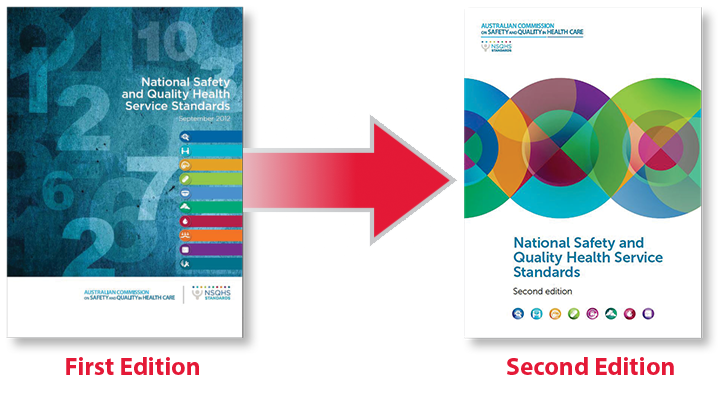
The NBA has worked with the Australian Commission on Safety and Quality in Health Care (ACSQHC) to develop the revised Blood Management Standard. The Blood Management Standard builds on the existing Blood and Blood Products Standard from the first edition. The main changes are that the new standard focuses on improving outcomes for patients by improving their medical and surgical management in ways that optimise and conserve their own blood, and ensure that any blood and blood products they receive are appropriate and safe.
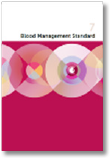
There are ten actions identified in the second edition compared to twenty three in first edition, including two new actions:
Action 7.4 - specific strategies for developing and implementing PBM strategies and
Action 7.6 - supports clinicians to prescribe and administer blood and blood products appropriately, in accordance with national guidelines and national criteria.
The PBM Implementation Strategy 2017-2021 outlines that priority will be given to developing tools and resources that support health service organisations in implementing the Blood Management Standard. These include patient materials, case studies policy guidance, clinical standards and audits.
Promotion and communication
The NBA promotes improved inventory management and appropriate clinical use of blood and blood products at a range of relevant national and international forums.
In 2017-18 the NBA continued its promotion and communication campaign to increase awareness of the need to improve clinical practice and inventory management in relation to blood products. This included representation and promotional and educational activities at a range of clinical and health sector conferences and events, including the following:
- Annual National Primary Health Network (PHN) Conference, July 2017
- Australian Medical Students' Association (AMSA) National Convention, July 2017
- Australian Nurses and Midwives Conference, September 2017
- Conference of the Australasian Society of Immunology and Allergy (ASCIA), September 2017
- Rural Medicine Australia, October 2017
- GP17, October 2017
- Haematology Society of Australia and New Zealand, Australian & New Zealand Society of Blood Transfusion and the Australasian Society of Thrombosis and Haemostasis (HAA), October 2017
- Haemophilia Foundation Australia (HFA) National Conference, October 2017
- Perioperative Patient Blood Management Symposium, February 2018
- Royal College of Pathologists of Australia (RCPA) Pathology Update, March 2018
- International Consensus Conference on Patient Blood Management, April 2018
- Australian & New Zealand Association of Neurologists (ANZAN), May 2018
- Australian and New Zealand College of Anaesthetists (ANZCA), May 2018.
HAA 2017 Awards sponsored by the National Blood Authority
HAA is the annual scientific meeting of the Haematology Society of Australia and New Zealand, the Australian and New Zealand Society of Blood Transfusion (ANZSBT) and the Thrombosis and the Haemostasis Society of Australia and New Zealand. The NBA actively participates in this meeting, including through sponsoring two key awards.
ANZSBT Young Investigator Award

Since 2014, the ANZSBT Council has been awarding a prize sponsored by the NBA for the best oral or poster abstract with a transfusion focus presented at HAA by a young investigator. To be eligible, applicants must be thirty five years or less on the last day of the meeting.
In 2017 the recipient of the award was Dr Joanne Tan, a Research Fellow with the Australian Red Cross Blood Service for her presentation 'Propensity for alloantibody formation in transfusion-dependent patients'.
Dr Tan's work is an issue for the transfusion medicine community as transfusion-dependent patients who develop alloantibodies are at risk of delayed haemolytic transfusion reactions if they receive a red blood cell unit of the same antigen specificity. This means blood banking staff and Blood Service staff need to work harder to find extended phenotype-matched red blood cells for these patients for future blood transfusions. One of the management strategies for these patients is to prevent the formation of alloantibodies in the first instance.
Best poster/oral presentation award on haemovigilance

For the first time in October 2017, the NBA sponsored an award for the best poster/oral presentation on Haemovigilance as judged by the ANZSBT Council at HAA.
The recipient of the award was Dr Anastazia Keegan, a Consultant Haematologist and Transfusion Medicine Specialist at the Australian Red Cross Blood Service in Western Australia. Dr Keegan has a particular interest in transfusion medicine horizon scanning, haemovigilance, major haemorrhage protocols/critical bleeding and obstetric Haematology. Dr Keegan won the award for her presentation on 'A risk tool to mitigate severe haemolytic reactions due to high isohaemagglutinins in apheresis platelets'.
Dr Keegan's work is an issue for the transfusion medicine community as ABO haemagglutinin reactions are complex, multifactorial and likely under-reported. There is a lack of a universal ABO haemagglutinin titre technique and no nationally endorsed guidelines defining risk. Therefore, transfusion scientists and clinicians are unable to protect patients from potentially catastrophic transfusion reactions. The development of a Risk Matrix Tool for the pathology service to assess the risk of minor ABO mismatched apheresis platelet transfusions based on ABO haemagglutinin titres improves patient safety by assisting clinical decision-making when minor ABO mismatch platelets must be used.

Education and Training
BloodSafe eLearning Australia
BloodSafe eLearning Australia (BEA) provides online education and training resources for health professionals in Australia. The program aims to improve knowledge of patient blood management and clinical transfusion practice in order to improve patient outcomes.
The first course, Clinical Transfusion Practice, was released in late 2007. The course catalogue has since expanded to 17 courses and one mobile device application, with further courses in development. All courses are based on published guidelines, best practice and expert opinion.
At the end of June 2018 there were 446,270 learners registered with the program who had completed 1,060,613 courses.
For the 2017-18 reporting period the BEA program:
- received 58,243 new user registrations
- had 159,180 courses completed by users, with 13,265 courses completed on average each month, approximately one course completed every three minutes
- was used by more than 1,500 Australian health care organisations (hospitals, pathology laboratories, staffing agencies etc) to improve staff knowledge and assist them to meet their accreditation requirements
- reached two significant milestones: a 10-year anniversary of the first course being released and one million courses completed by users in that time
- promoted the courses in professional journals, at scientific, medical and nursing conferences, and provided resources for organisations to undertake their own promotions
- developed new course content based on PBM Guideline Module 6 – Neonatal and Paediatrics
- developed a Clinical Transfusion Practice Refresher course
- commenced the development of a new course on viscoelastic haemostasis testing
- commenced a major upgrade and migration to a new learning management system that will provide better stability, less reliance on external vendors and improved functionality. While there were one-off costs associated with the migration, in the longer term this should result in a reduction in learning management system expenditure
- contributed to a review of the funding arrangements undertaken by the NBA.
National Safety and Quality Health Service Standards
The National Safety and Quality Health Service (NSQHS) Standards were developed by the Australian Commission on Safety and Quality in Health Care (ACSQHC) with the Australian Government, State and Territory partners, consumers and the private sector. The primary aim of the NSQHS Standards is to protect the public from harm and improve the quality of health care. They describe the level of care that should be provided by health service organisations and the systems that are needed to deliver such care.
During 2017-18 the NBA continued to work with the ACSQHC and other stakeholders in the development of the second edition of the Standards, which were released in November 2017.
Thank you

The NBA could not fulfil its role in the blood sector without the extraordinary help and support of the clinical, scientific and consumer community.
All external stakeholders in the blood sector provide the NBA with advice that allows the NBA to produce quality outputs and meet the objectives of the national blood arrangements.
Thank you to our clinical, scientific, and consumer advisors.
These include the members of the:
- Jurisdictional Blood Committee Working Group for the review and update of the
Patient Blood Management Guidelines - Patient Blood Management Guidelines Clinical Consumer Reference Group for the update of the Critical Bleeding Massive Transfusion module
- National Immunoglobulin Governance Advisory Committee and the Specialist Working Groups for Immunology, Haematology, Neurology and Transplantation Medicine
- Australian Bleeding Disorders Registry Steering Committee
- Australian Bleeding Disorders Registry User Reference Group
- Australian Haemophilia Centre Directors' Organisation
- National Patient Blood Management Steering Committee
- Haemovigilance Advisory Committee
- BloodNet User Reference Group
- Immunoglobulin User Acceptance Testing Group
- MyABDR User Reference Group
- National Blood Sector R&D Program Expert Review Panel
The NBA would also like to acknowledge the support it receives from the many colleges, societies and individuals who contribute to our publications, resources and tools.
Research and Development
National Blood Sector Research and Development Priorities
Under the National Blood Agreement the NBA is required '...to facilitate and fund appropriate research, policy development or other action in relation to new developments by relevant government or non-government persons or bodies'. The National Blood Research and Development Strategic Priorities 2013-16 is under review. This is intended to provide a useful resource to guide priority setting for research. It may be used by researchers to support funding requests, including from the National Health and Medical Research Council, by identifying that their research aligns with priorities communicated by governments.
National Blood Sector Research and Development Program
In September 2015 the NBA received approval from funding governments to implement a pilot program to directly fund some research and development activities in the blood sector.
The pilot program was established to fund a limited number of projects or activities assessed as likely to produce valuable research outcomes in identified key priority areas. Information gathered from the pilot would be available for use by governments to confirm the viability and value of further blood sector specific research and development funding to support a National Blood Sector Research and Development Program.
The program targets the following topics, where the priority for research has been identified through pre-existing strategic programs of the NBA and governments in the blood sector:
- patient blood management evidence gaps, as identified in each module of the PBM Guidelines
- efficient and effective use of immunoglobulin products, as highlighted through the
Ig Governance Program.
The overarching objectives are to identify and fund research that will:
- enhance the sustainability and affordability of the national supply of blood products, including through increased efficiency and reduced blood product usage and wastage
- identify appropriate use and reduce inappropriate use of blood products
- maintain or enhance clinical outcomes for patients by providing evidence or new knowledge to:
- understand the biological action of blood products
- identify optimum treatment, dosing or indications for use for blood products
- compare the use of blood products with alternative strategies and treatments.
In 2016-17, the NBA commenced funding nine successful research grant applications from Round 1 of the Pilot. Seven from twenty three high quality applications were funded in Round 2. Grants for these projects commenced in early 2017-18. Round 3 attracted seventeen applications which were under consideration at the end of the 2017-18 financial year.
The NBA has received a substantial level of high quality input from clinical academic, research and government experts who participated in the review process and assisted the NBA in determining the mix of research projects to be funded within the Program's limited budget. The NBA is confident that the funded research will be a valuable contribution towards achievement of the blood sector's research outcomes. The outcomes of each grant funding round are reported on the NBA's website.
Several projects have completed successfully to date with publications being accepted in peer reviewed journals. Funded research has been presented at multiple conferences within Australia and overseas and has attracted the interest of the media.
National Blood Sector Research and Development Program
The National Blood Sector Research and Development Program has funded key research to address policy and clinical research gaps pertinent to patient blood management and the use of the immunoglobulin therapy funded under the national blood arrangements.
A description of just two of the funded research projects including early outcomes is provided below.
Improving the use of intravenous immunoglobulin (IVIg) in children with neurological disorders
Principal Chief Investigator – Professor Russell Dale
This grant provided funding to conduct, collect, analyse and present data on fifty nine patients with relapsing myelin oligodendrocyte glycoprotein (MOG) antibody demyelination. The study included a detailed comparison of steroids, IVIg, mycophenolate and rituximab. This study found that IVIg was effective in this condition, and that steroids are also highly effective, but mycophenolate seems less effective than either IVIg or steroids. This is very useful data, but like much data in rare disease, larger studies will be needed to be more definitive. This study completed on schedule and has delivered the best available data on treatment of this condition at this time.
Outcomes to date include:
- the study has been presented at the European Committee for Treatment and Research in Multiple Sclerosis (ECTRIMS) in Paris 25-28 October 2017 and a journal article published in the Journal of Neurology Neurosurgery and Psychiatry.
- Ramanathan S, Mohammad S, Tantsis E, et al. 'The clinical course, therapeutic responses, and outcomes in relapsing MOG antibody-associated demyelination', J Neurol Neurosurg Psychiatry 2018; 89:127-137.
Effects of antenatal haemoglobin and obstetric transfusion on adverse maternal outcomes
Principal Chief Investigator – Professor Jane Ford
One in ten women suffer excessive bleeding after childbirth and fifteen per cent of these will have a red blood cell transfusion. The grant is providing salary support to analyse information held in previously established, as well as newly assembled, large population datasets that link core maternity data with antenatal screening, pathology and blood usage information.
The two year project is on schedule and promises to provide information that could challenge current clinical practice. Early findings suggest that lower haemoglobin levels in the first half of pregnancy are associated with higher rates of blood transfusion and poorer outcomes for mother and baby. Furthermore, among low-risk women receiving small volume transfusions following bleeding at birth, severe maternal morbidity, intensive care admission and longer hospital stays are more common than among un-transfused women experiencing bleeding.
Outcomes to date include:
- oral presentation to be given at the Australasian Epidemiological Association conference, Fremantle, Western Australia, in October 2018
- submission of a manuscript entitled 'Outcomes associated with transfusion in low risk women with obstetric haemorrhage' to Vox Sanguinus in December 2017.

